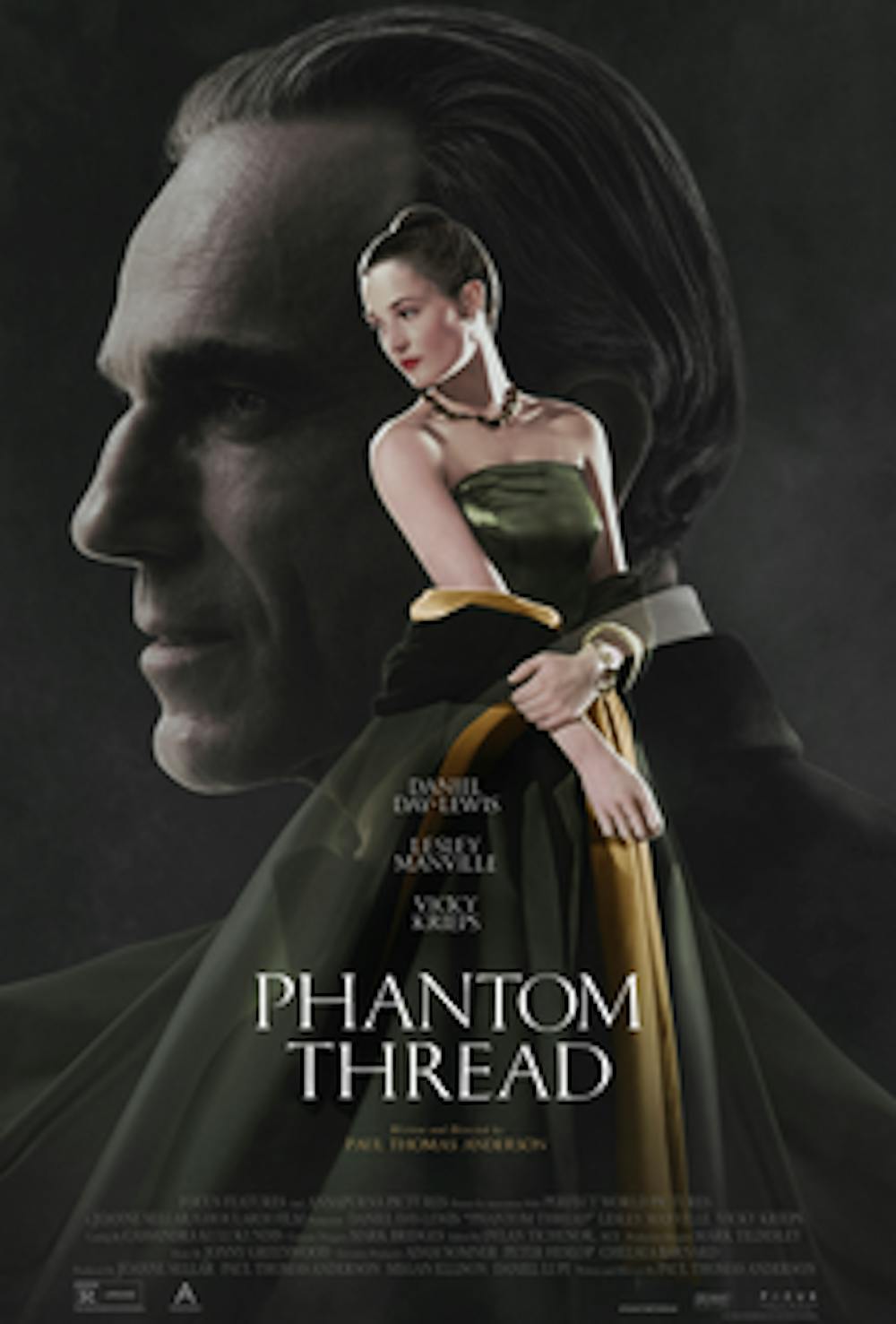The tortured genius is a character well-suited for the screen. Dissecting the life of a social pariah, misunderstood but harboring immense talent, represents a stylistic opportunity as a director and, for the audience, a fascinating window into a complicated psyche. Reynolds Woodcock of “Phantom Thread” — a couture fashion designer in 1950s London — is fictional, but the tension built by director Paul Thomas Anderson feels real. Visually and sonically, “Phantom Thread” is close to perfection. Narratively, the film suffers from the inevitable question of a “tortured genius” story — is extraordinary talent an excuse for indecent behavior?
Reynolds acts childishly — married to routine, afraid of change, in need of tender care but inattentive to the emotions of others. His exasperating lifestyle, while compelling, inspires little sympathy. His muse, Alma — a waitress he meets at an inn in the country — is his stubborn counterpart, a woman pulled into Reynolds’s finicky world but never fully absorbed.
The tension builds in the film — the audience waits for Reynolds to unravel. There is a layer of payoff at the end of movie, but the story feels far from over. “Phantom Thread” inspires an uncomfortable kind of mulling — after over two hours of heightened tension, the film leaves an eerie feeling in the pit of the stomach.
“Phantom Thread” is beautiful, and it is a love story, but it is not a beautiful love story — perhaps it was not meant to be. And while the lead actors in this film — Daniel Day-Lewis as Reynolds and Vicky Krieps as Alma — are singularly brilliant, their chemistry as a couple faltered at times when it could have elevated the film. This could partially be due to the stylistic choice of inserting pregnant pauses mid-conversation, which built dramatic tension but did little to develop any sense of sexual or romantic attraction between the two leads.
However, the slow pace of the film is not wholly detrimental. It possesses a deliberate style, turning what could be a period-piece snooze into a surprising, white-knuckle drama. While the narrative tends to lag, time does not feel wasted on lingering shots of gowns, faces and perhaps the most visually appealing omelette ever displayed on the big screen. It’s also — purely stated — a stunningly crafted film with exquisite costume design and art direction, accompanied by a perfectly timed, subtly disconcerting score and meticulous sound editing.
Paul Thomas Anderson’s direction is purposeful and enchanting, while his shot construction alluring and distant. The rare warmth between Reynolds and Alma, as well as Reynolds’s sister Cyril — the most underrated character in the film by far and played with charming stoicism by Lesley Manville — provide moments of levity amidst the rigid elegance of the storytelling.
So, can Reynolds be forgiven for his outward pretension and disdain bordering on abuse? Does his fictional story carry more or less weight than a biographical film would? Was Paul Thomas Anderson thinking about any of these questions, or did his narrative get lost in the production of a truly stunning film? The individual audience member can decide.
At the beginning of the film, a poised Alma informs Dr. Hardy — and the audience — that she has given Reynolds what he desires most — “Every piece of me.” For two hours and after the credits roll, these words settle with distinct unease — a complicated, problematic twist on a familiar story.





